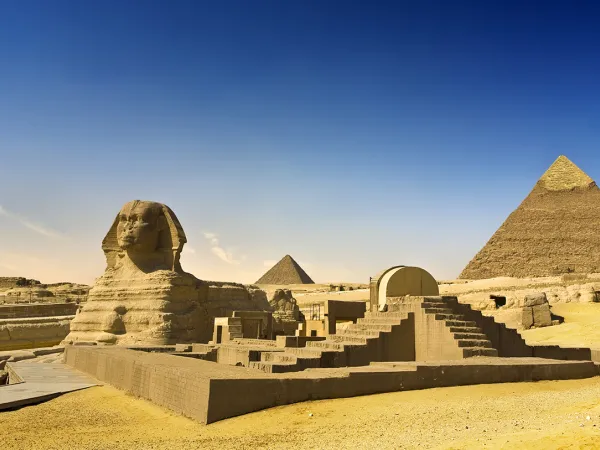Itinerary
Itinerary
Day 1 - Arrive in Cairo, Egypt
Welcome to Egypt! Arriving off your international flight, clear customs, and immigration, then transfer to your hotel. The remainder of the day is at your leisure.
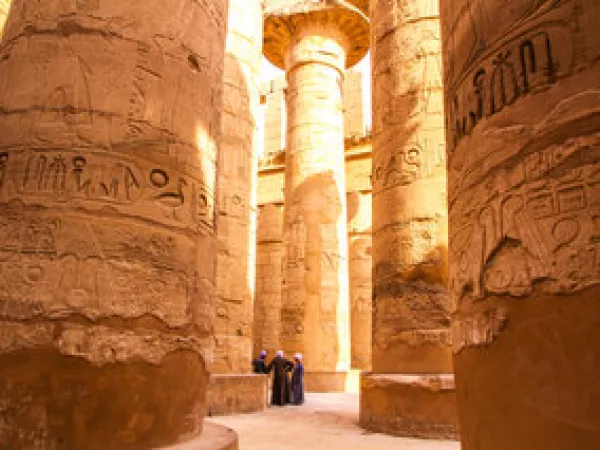
Day 2 - Cairo to Luxor
Leaving Cairo this morning with a short flight to Luxor, transfer to the hotel with time to freshen up. Later, visit the Karnak Temple, the main place of worship during the eighteenth dynasty and the second largest ancient religious site in the world. After, head back to the hotel for a welcome dinner.
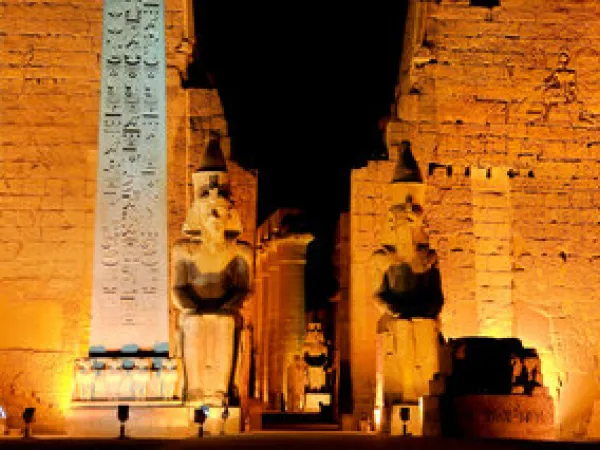
Day 3 – Luxor
This morning and afternoon are spent at leisure. Tonight, view the Luxor Temple, illuminated at night; one of the most well-known images that has come out of Egypt. You might also choose to do an Optional Tour: Sound & Light at Karnak ($).

Day 4 – Luxor
Early this morning, you can choose to do an Optional Tour: Hot Air Balloon Ride at Sunrise ($). Visit Luxor Museum, home of near perfect artifacts, with treasures obtained from the tomb of Tutankhamun, royal mummies of two Pharaohs and much more. Later, board your home for the next seven nights, the Nile Cruise Ship M/S Sonesta St. George I. Spend free time exploring the ship before joining everyone for a night of music and dance. You can also choose to do an evening Optional Tour: Horse Carriage Ride in Luxor ($).
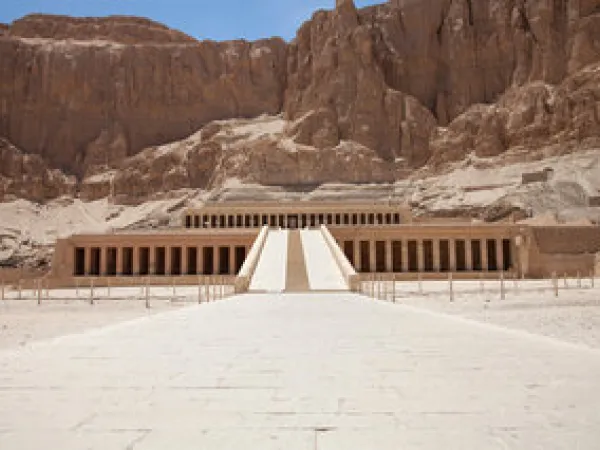
Day 5 - Luxor to Esna
After breakfast onboard, head out to visit the West Bank, home to Valley of Kings, the Temple of Queen Hatshepsut at Deir el-Bahari, and the Colossi Memnon. Afterwards, relax on the sundeck as you sail along the Nile to your next destination, Esna. Tonight, join the captain for a Welcome Cocktail.
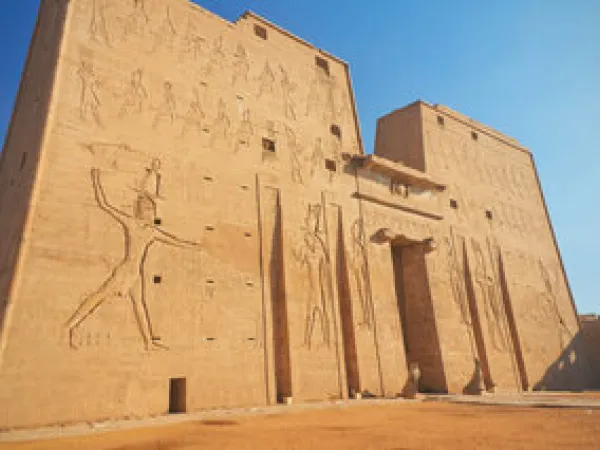
Day 6 - Esna to Edfu to Kom-Ombo
This morning, wake up in Edfu. After breakfast, visit Horus Temple, one of the best-preserved temples in Egypt, built to honor the falcon god Horus. The rest of the day is yours to enjoy on the Nile as we sail to Kom-Ombo. Tonight, enjoy an authentic Egyptian Gallabiyah Party.

Day 7 - Kom-Ombo to Aswan
Watch the beautiful scenery pass by as you sail along the Nile to Aswan this morning. Today, visit the High Dam to learn about the massive impact it has with Egypt’s economy. After, tour the Temple of Philae, which is situated on an island in the reservoir of the Aswan Low Dam. Next, sail the Nile on a traditional Felucca, stopping to visit the Aswan Botanical Gardens. In the evening, enjoy a Belly Dance Show and Egyptian Folklore Show onboard the river cruise.

DAY 8 – MARCH 8, 2024: ASWAN
Today is a day spent at leisure. Enjoy the amenities onboard, or explore Aswan, known for its beautiful Nile Valley scenery and peaceful aura. Or join an Optional Tour: Abu Simbel Day Excursion ($). In the evening, experience a traditional Nubian Show onboard the ship.
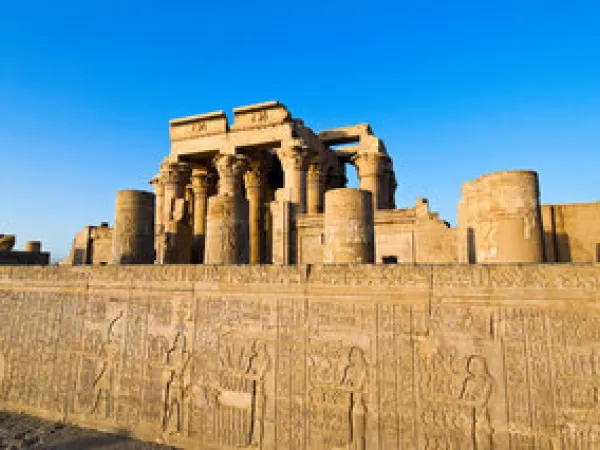
Day 9 - Aswan to Kom-Ombo to Esna
A leisurely start to the day onboard as you sail along the Nile. Stopping in Kom-Ombo, visit the Temple of Sobek & Haroeris, the crocodile and the falcon god. Continue along the Nile, enjoy Afternoon Tea, as you head to Esna for the evening. Tonight, enjoy another Egyptian Gallabiyah Party.
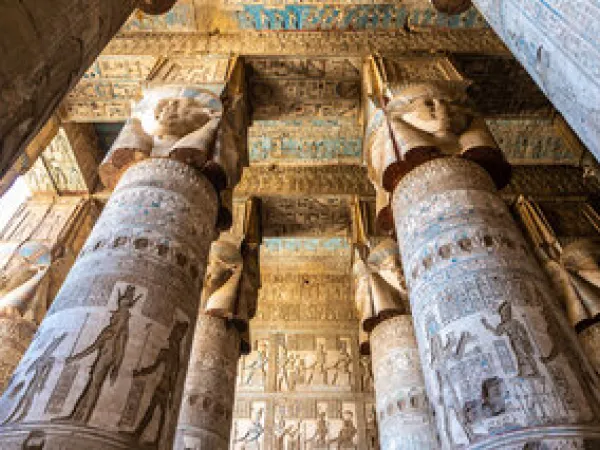
Day 10 - Esna to Luxor
This morning, as you sail to Luxor, enjoy the Nile scenery as you pass by one last time. Arriving in Luxor, visit the Dendera Temple Complex, home of the Hathor Temple, one of the most colourful temples in Egypt with an intricately detailed ceiling, and one of the most awe-inspiring hypostyle halls in Egypt. Later, return to the ship for afternoon tea and dinner, before a night of music and dance.
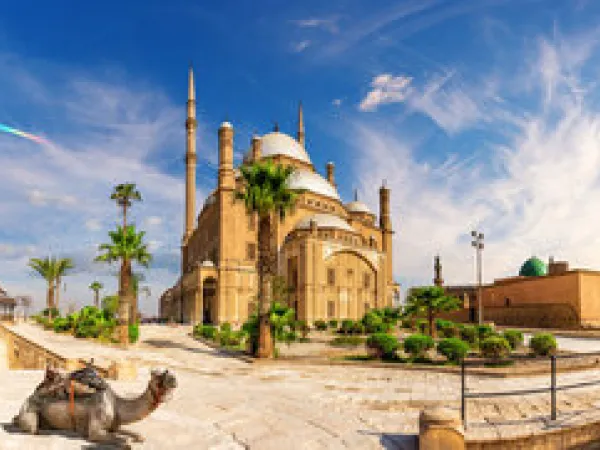
Day 11 - Luxor to Cairo
After breakfast, disembark and take a short flight back to Cairo. Visit the Citadel of Salah El-Din including the Mosque of Muhammad Ali. Next, visit the Old Coptic Cairo, a stronghold for Christianity in Egypt until the Islamic Era. Also visit the Hanging Church and Abu Serga Church which dates to the 4th century.
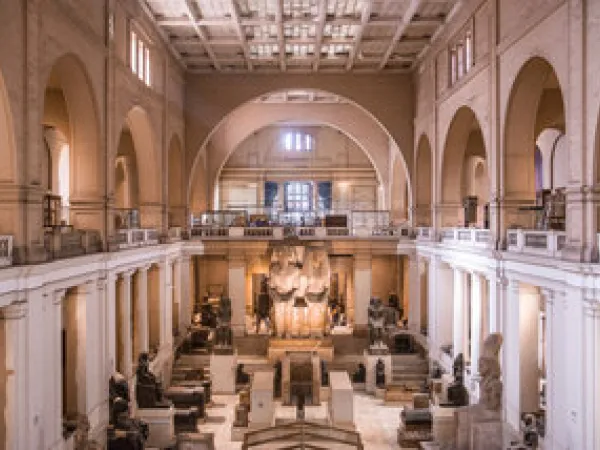
Day 12 - Cairo
Today is a full day spent at the Egyptian Museum, home to over 170,000 artifacts of ancient Egypt, and the famed Mummies Room, with its display of royal mummies from the Empire Age, and, the National Museum of Egyptian Civilization, the only museum in Egypt that offers a general overview of all the different historical periods that encompass Egypt. Tonight, savour a themed Moroccan Dinner at a restaurant overlooking the Nile River.
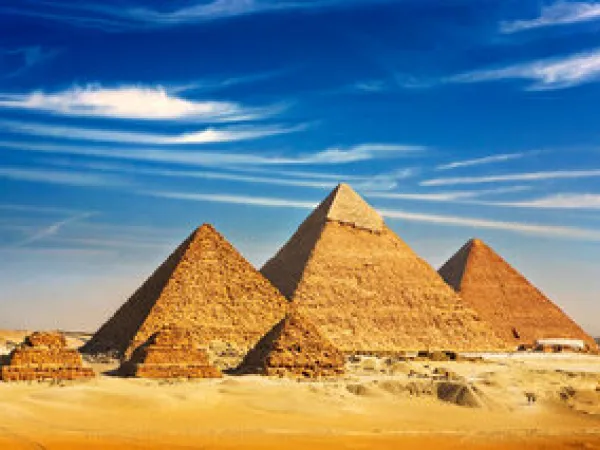
Day 13 - Cairo
No doubt one of the main highlights of the trip, spend the day touring the Pyramids of Giza & the Sphinx, while also exploring inside the Great Pyramid Cheops. Also visit Memphis, the ruins of the ancient capital of Egypt, and Sakkara, a vast ancient burial ground.
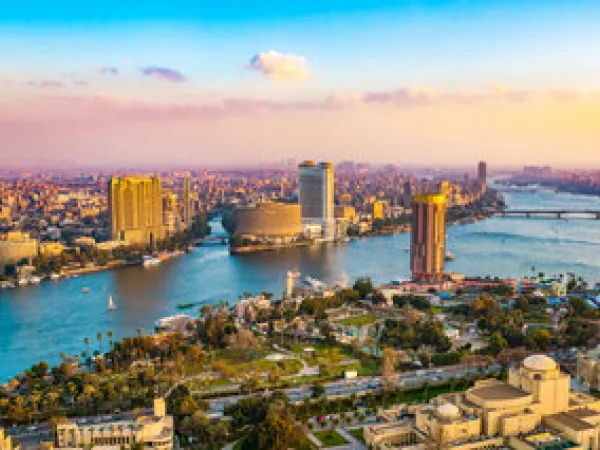
Day 14 - Cairo
Today is yours to explore at your leisure! You may like to join an Optional Tour: Day Tour to Alexandria ($). Join your fellow travellers this evening at the farewell dinner at a restaurant with views of the Pyramids of Giza.
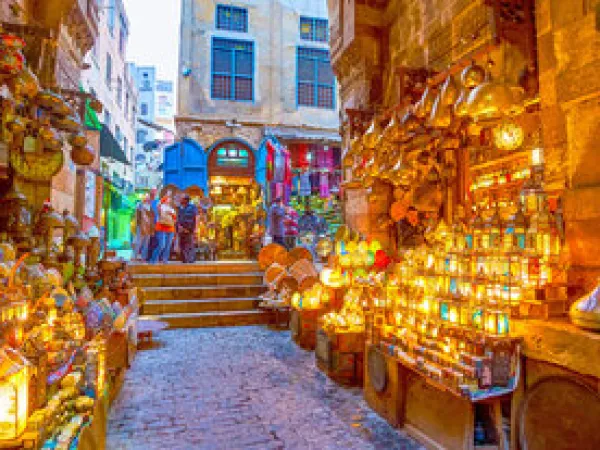
Day 15 – Cairo
This morning, transfer to Moez Street, surrounded by a mix of medieval mosques and buildings alongside modern vendors and shops in Old Cairo. From here, visit the world-famous Khan El Khalili bazaar, the oldest market of the middle east housing many mini bazaars and traditional coffee shops, enjoy a walking tour with plenty of free time for shopping.

Day 16 – Depart Cairo
After breakfast, check out of the hotel and transfer to the airport for your flight home.
Dates & Pricing
Dates & PricingPricing coming soon!
Secure your seat with a $700 deposit!
Get a jump on the crowd by making a risk free deposit. As this trip is still in the planning stage, your pre-reservation entitles you to be notified as soon as the dates and pricing is posted. We do this so you can see what will be offered in the coming months/year.
Tour Highlights
Tour Highlights
Multi-Night Stay in Cairo, Luxor & Aswan
Sometimes a day just isn't enough to take in all a place has to offer.

7-Nights Onboard The "MS Sonesta George 1" Nile Cruise
The newest ship of the Sonesta Nile fleet is the Sonesta St. George I Nile Cruise. Noted as one of the most elegant ships on the Nile, the St. George offers a full-service spa and fitness center, restaurant, bars, nightly entertainment and guided excursions.
The Sonesta St. George I offers luxurious accommodations that provide the ultimate in comfort, elegance and design.
Located on the lower deck, the Main Dining Room, designed with sophistication and style, serves breakfast and lunch buffets as well as à la carte dinners. Dress code for dinner is smart casual.
Surrounded by breathtaking views of the Nile, the Sun Deck serves refreshing cocktails and beverages.
Unique classical motifs decorate the walls and ceiling of the Lounge, which features a dance floor and stages nightly entertainment. A full-service bar serves a wide range of cocktails and beverages.

Karnak Temple
Visit Karnak Temple, the open air museum, and the largest ancient religious site in the world. Karnak consists of huge pillars, towering columns, massive avenues of sphinxes, and an obelisk that stands 97-feet tall and weighs 323-tons.
The Temple of Karnak was believed to be the spot where creation began. They also believed it was a point of interaction between the god Amun-Ra and Egyptians. It is important to Egypt's cultural history because it was a place of worship and provides clues about the ancient Egyptian religion.

Luxor Temple
Visit Luxor Temple, constructed over hundreds of years by Amenhotep III, Ramses II, Tutankhamun, and other pharaohs. Luxor Temple was the largest and most significant religious center in ancient Egypt.
One of the main functions of the temple focused on the annual Opet festival, an event in which statues of Mut, Khonsu, and Amun would travel from Karnak to the temple.
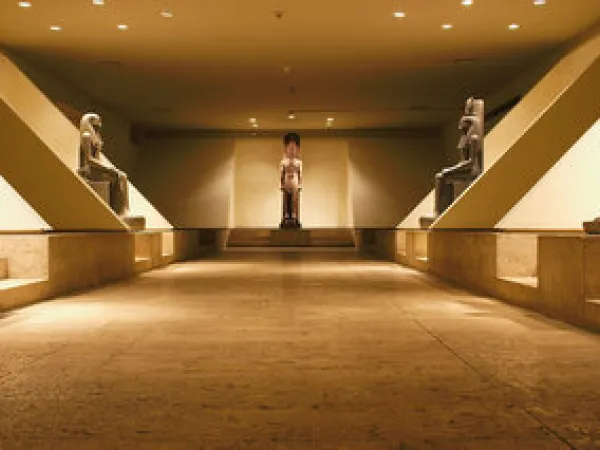
Luxor Museum
From royal mummies to King Tut’s sandals, the Luxor Museum’s magnificent collection contains some of Thebes’ most impressive treasures. This is where to find many artifacts excavated from the Valley of the Kings and other Luxor sites, but the exhibits extend from the ancient world all the way to the Islamic Mamluk period.

West Bank, including Valley of Kings, The Temple of Queen Hatshepsut, and the Colossi Memnon
The West Bank of Luxor contains one of the largest collections of archaeological treasures in the world. Its approximately nine square kilometers and encompasses the Valley of the Kings, Valley of the Queens, the village of Dayr al-Madinah, the palace-city of Malqata, more than 5,000 nobles' tombs, countless shrines, Palaeolithic workstations, and some 40 plus temples.

Horus Temple
Visit Horus Temple, one of the best preserved shrines in Egypt. The temple was built in the Ptolemaic Kingdom between 237 and 57 BC. The inscriptions on its walls provide important information on language, myth and religion during the Hellenistic period in Egypt.

High Dam & Temple of Philae
Visit the Aswan Dam (High Dam), one of the world's largest embankment dams, capturing the mighty Nile River in the world's third largest reservoir, Lake Nasser.
After, Visit the Temple of Philae, built during the reign of Ptolemy II (Egypt's Greco-Roman Period), the Temple of Isis at Philae is dedicated to Isis, Osiris, and Horus. The temple walls contain scenes from Egyptian mythology of Isis bringing Osiris back to life, giving birth to Horus, and mummifying Osiris after his death.
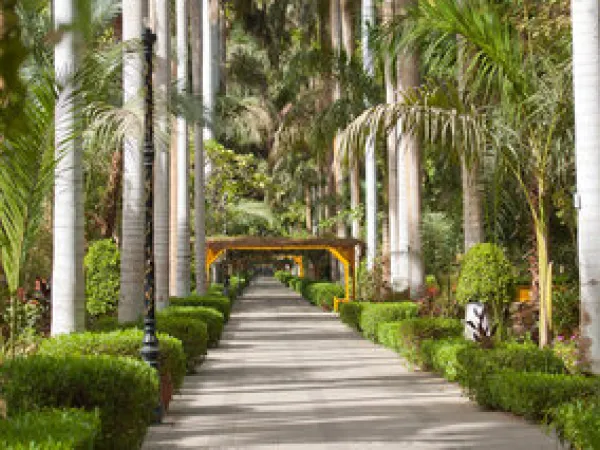
Egyptian Felucca & Aswan Botanical Gardens
Ride a traditional Egyptian wooden boat (felucca) with a canvas sail, along the Nile to the Aswan Botanical Gardens, located on Kitchener's Island. Covering 6.8 hectares, the Aswan Botanical Garden is home to thousands of birds and many exotic plants imported from many parts of the world like Far East India and Africa. The Aswan Botanical Garden offers a beautiful and unique escape from the city. A true jam of Egyptian treasures, strolling through the garden will take you into a dream state of scenery. The entirety of the island is landscaped with rare and exotic plants that were planted there by order of Lord Horatio Kitchener, who has gifted the island in gratitude for his service as consul general of Egypt Army under British control.

Temple of Sobek & Haroeris
Visit the Temple of Sobek & Haroeris (Kom-Ombo Temple), one of the Nile Valley's most beautifully sited temples. Unique in Egypt, it is dedicated to two gods; the local crocodile god Sobek, and Haroeris, meaning Horus the Elder.
The temple's twin dedication is reflected in its plan: perfectly symmetrical along the main axis of the temple, there are twin entrances, two linked hypostyle halls with carvings of the two gods on either side, and twin sanctuaries. It is assumed that there were also two priesthoods. The left side of the temple was dedicated to the god Haroeris, and the right half to Sobek.

Dendera Temple Complex & Hathor Temple
Visit the Dendera Temple Complex & Hathor Temple. The main temple was built by Ptolemy XII and nearly completed by Queen Cleopatra VII, around 54 to 20 BCE. There is evidence of temples and other structures that date back all the way to 2500 BCE. Hathor is the Egyptian sky goddess of sexual love, fertility, music, and dancing. In its time, Dendera, in additiona to being a holy place of pilgrimage to honor the goddess of Hathor, was also the place where the sick went to seek healing.
The colors seen throughout the temples are original, and amazingly vibrant considering the inside was once covered in soot from Bedouins and other desert peoples seeking asylum.

Citadel of Salah El Din & Muhammad Ali Mosque
Visit the Citadel of Salah El Din & Mohamed Ali Mosque. The citadel in Cairo is one of the most important city attractions. The castle of impressive size was erected by Sultan Saladdin in the XII century. The main objective of this building was to protect the Old City from enemies. The most prominent attraction of the citadel is the mosque of Muhammad Ali, built in the nineteenth century. The huge main dome of the mosque, whose height is 52 m, dominates over the entire Old Town.
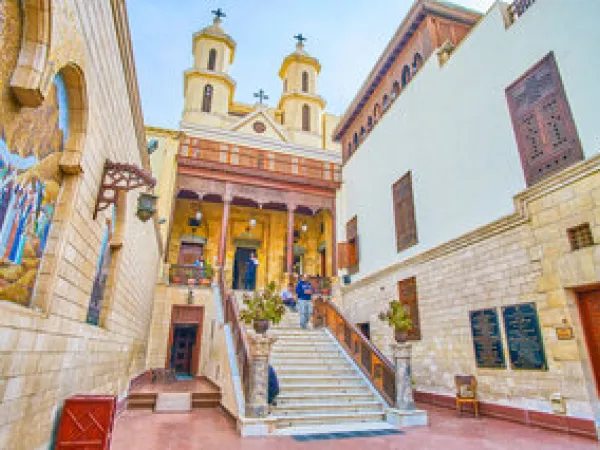
Coptic Cairo, Hanging Church & Abu Serga Church
Visit Coptic Cairo, a part of Old Cairo which encompasses the Hanging Church, named for its location above a gatehouse of Babylon Fortress, the Abu Serga Church, one of the oldest Coptic churches in Egypt dating back to the 4th century, and many other Coptic churches and historical sites.

Egyptian Museum
Visit the Egyptian Museum, the oldest archaeological museum in the Middle East, housing over 170,000 artefacts. It has the largest collection of Pharaonic antiquities in the world.
The Museum’s exhibits span the Predynastic Period to the Graeco-Roman Era (c. 5500 BC - AD 364).
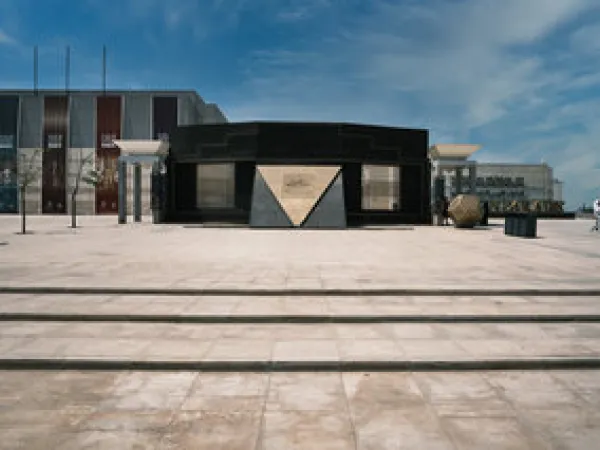
National Museum of Egyptian Civilization
Visit the National Museum of Egyptian Civilization, the first museum in the Arab world focusing on the earliest civilization in history - the ancient Egyptian civilization. It is the only museum in Egypt that offers the visitor a general overview of all the different historical periods that encompass Egypt. This has been approached as a layered cumulative product regarding the interaction of the Egyptian people with their land throughout history.
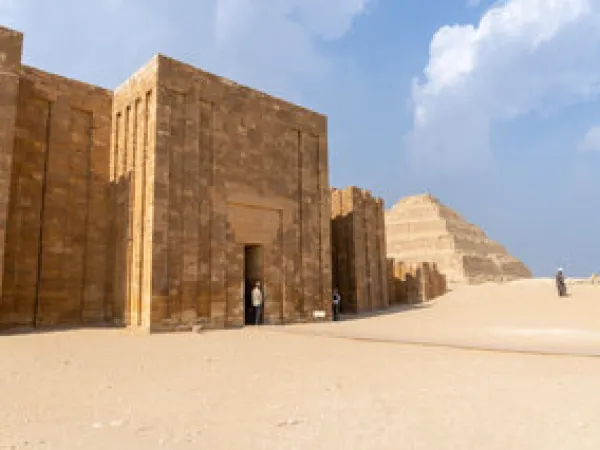
Ancient Ruins of Memphis & Sakkara
Memphis, founded around 3,100 BC, is the legendary city of Menes, the King who united Upper and Lower Egypt. Early on, Memphis was more like a fortress from which Menes controlled the land and water routes between Upper Egypt and the Delta. Having probably originated in Upper Egypt, from Memphis he could control the conquered people of Lower Egypt.
Sakkara is one section of the great necropolis of Memphis, the Old Kingdom capital and the kings of the 1st Dynasty as well as that of the 2nd Dynasty are mostly buried in this section of the Memphis necropolis. Three major discoveries have recently been made at Sakkara, including a prime minister's tomb, a queen's pyramid, and the tomb of the son of a dynasty founding king.

Pyramids of Giza & The Sphinx with entrance into Cheops
Spend the day visiting The Pyramids of Giza, the last remaining of the Seven Wonders of the ancient world, the great pyramids of Giza, are perhaps the most famous and discussed structures in history. These massive monuments were unsurpassed in height for thousands of years after their construction and continue to amaze and enthrall us with their overwhelming mass and seemingly impossible perfection.
The Great Sphinx of Giza is one of Egypt's most famous landmarks and is arguably the best known example of sphinx art. The Great Sphinx is among the world’s largest sculptures, measuring some 240 feet long and 66 feet high. It features a lion’s body and a human head adorned with a royal headdress. The statue was carved from a single piece of limestone, and pigment residue suggests that the entire Great Sphinx was painted.

Moez Street & Khan El Khalili Bazaar
Visit one of the biggest Open Islamic Museum in Cairo “El Moez Street” that has been recognized one of the greatest concentration of medieval architectural treasures in the Islamic world by United Nations study then move to Khan El Khalili, Cairo’s old bazaar.
